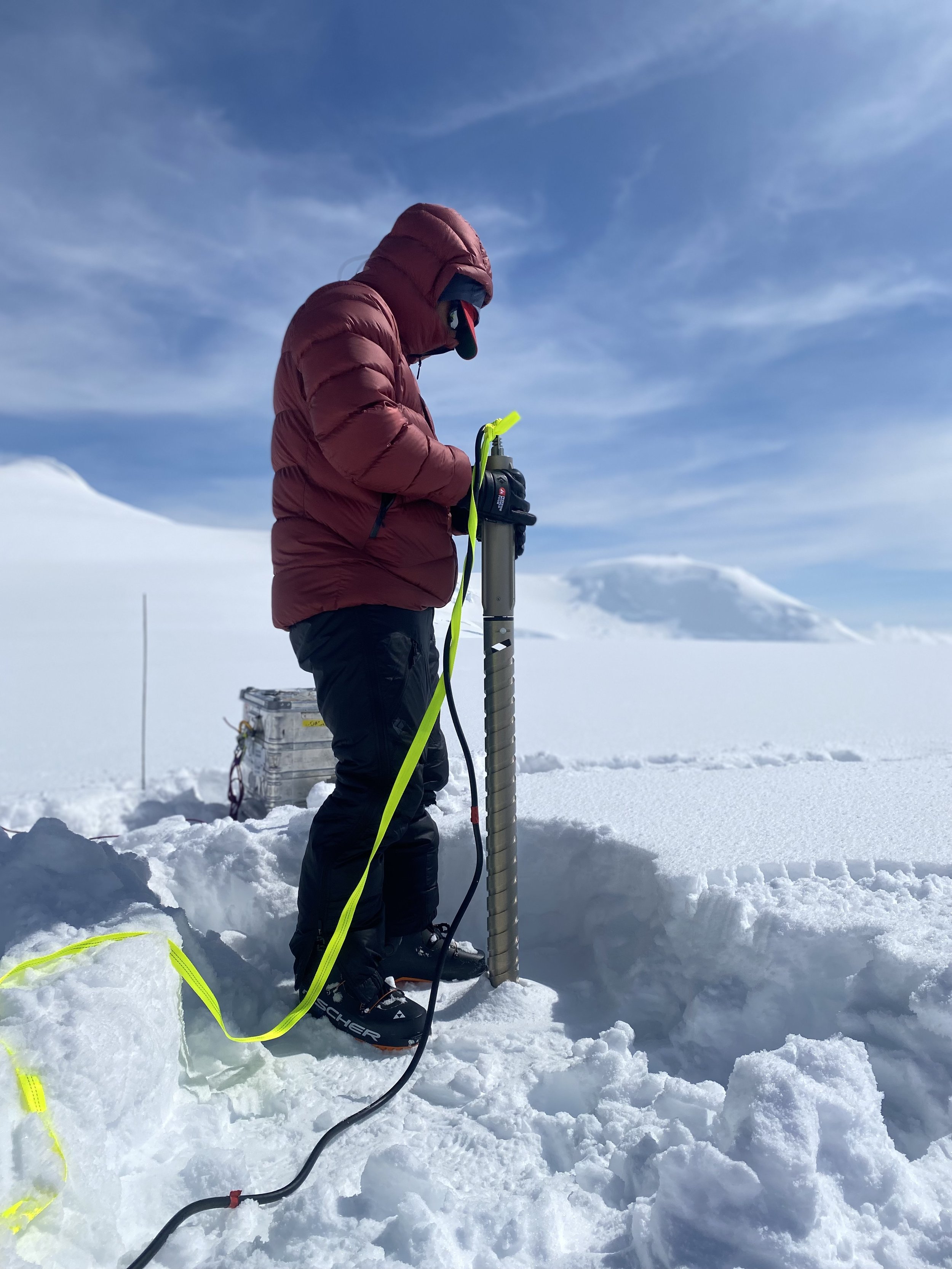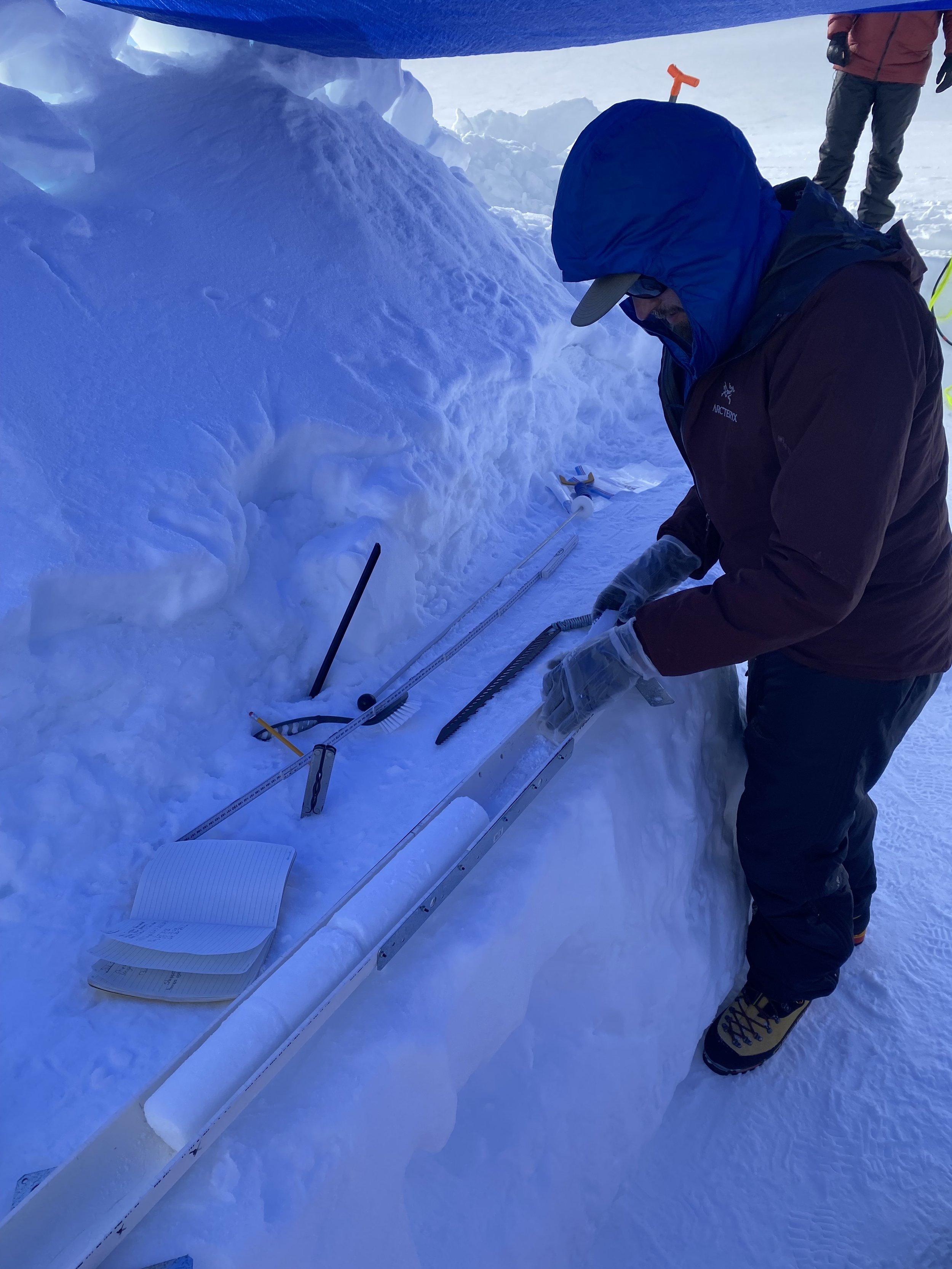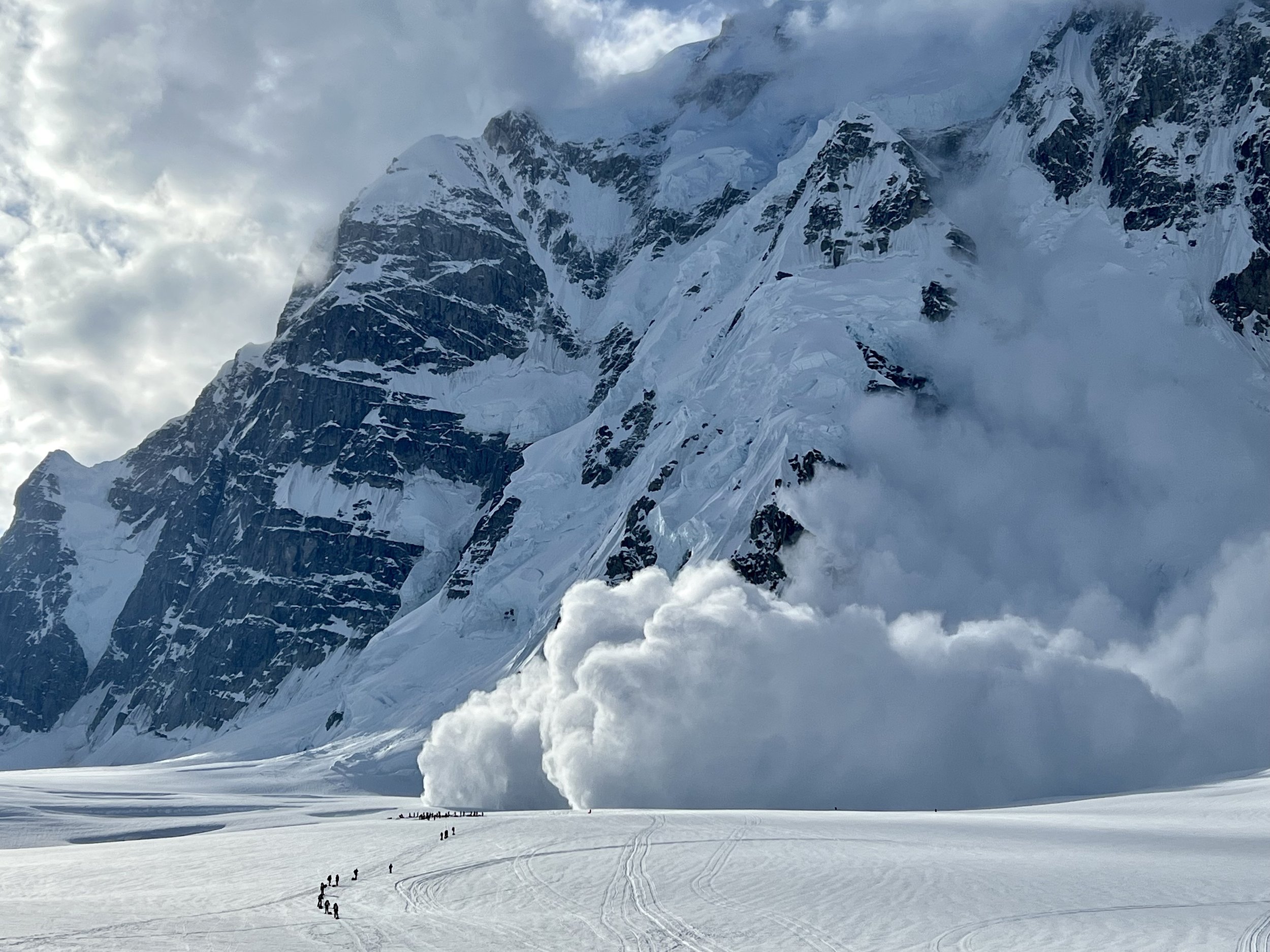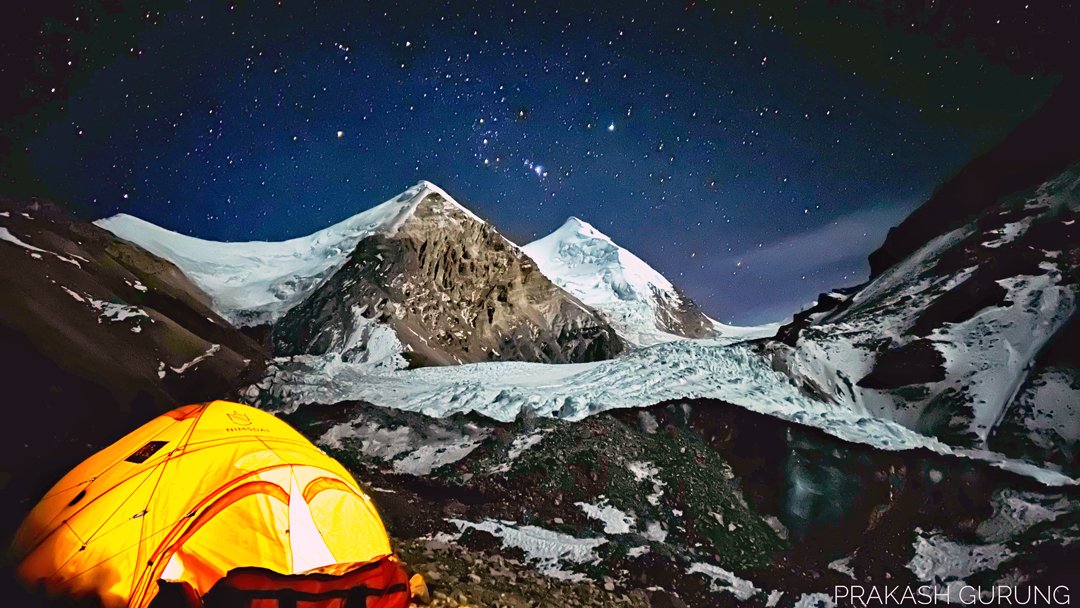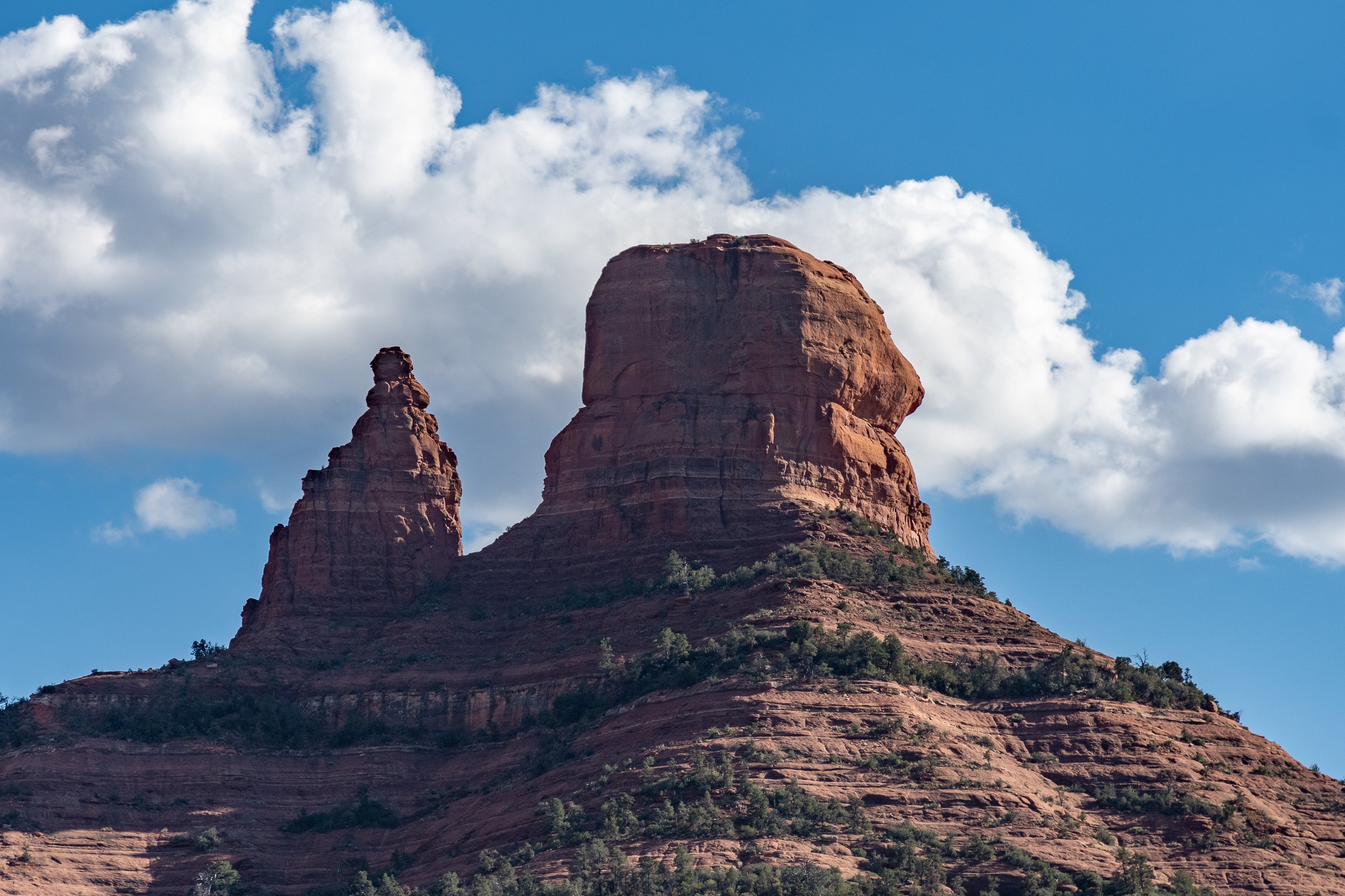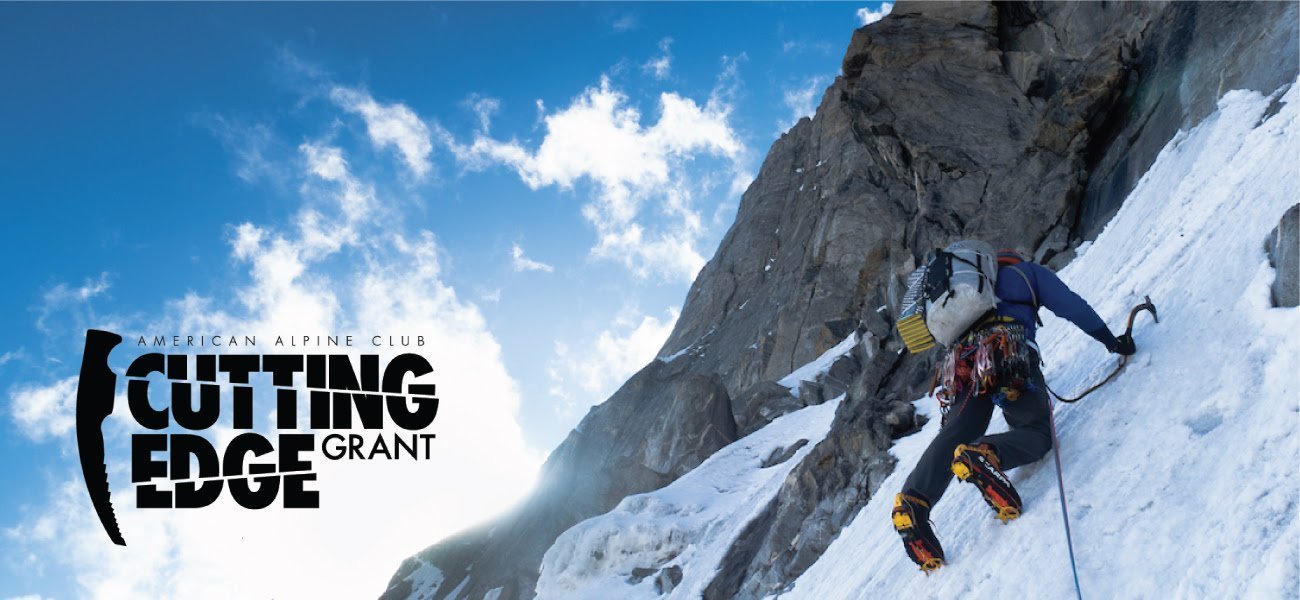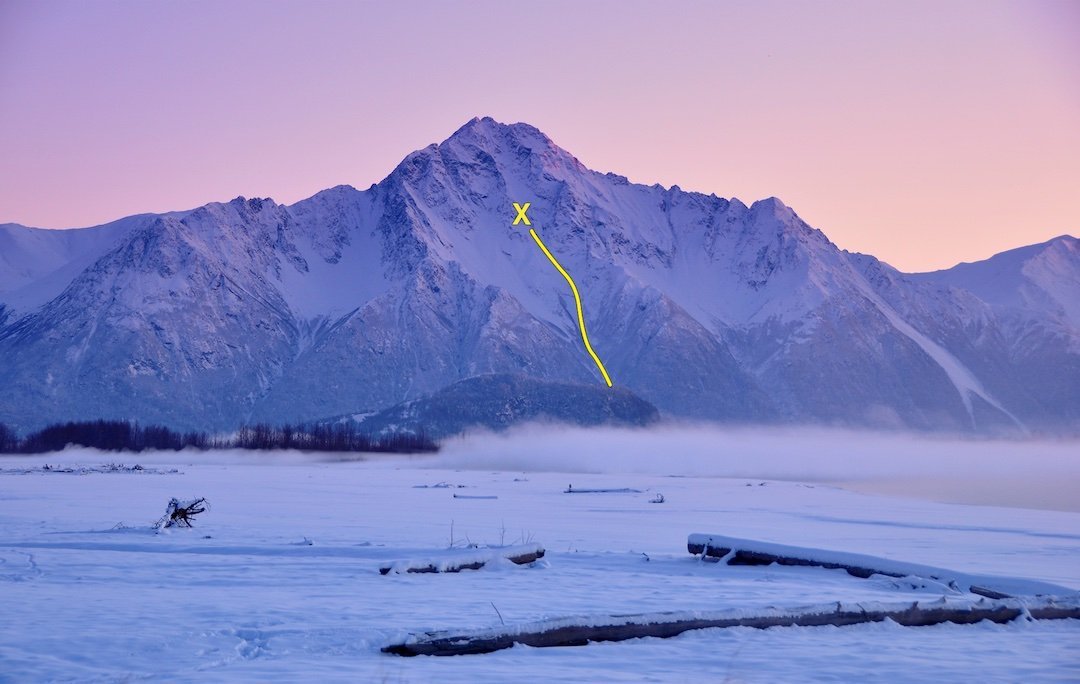A Research Grant Report
by: Inga Kindstedt, PhD Student in Earth and Climate Sciences (University of Maine); Liam Kirkpatrick, Dartmouth College '22, PhD Student in Earth and Space Science (University of Washington)
*This report has been lightly edited for clarity
Our field camp on the summit plateau of Begguya (13,000 ft). Photo credit: Emma Erwin.
The American Alpine Club supports scientific endeavors in mountains and crags around the world through our Research Grants. Landscapes and ecosystems are a vital part of climbing. We believe in the importance of funding projects that enrich our understanding of these places, contribute vital knowledge to the management of climbing environments, and improve the health and sustainability of the climbing community.
Definitions:
- Ice cores are cylinders of ice drilled from ice sheets or glaciers that are essentially frozen time capsules that scientists can use to reconstruct climate far into the past.
- Firn is snow at least one year old that has survived one melt season without becoming glacial ice.
- Isotopes are used to measure past climate properties
Ten miles south of North America's highest peak lies Begguya (Mt. Hunter), or "Denali's Child" in the Dena'ina language. To climbers, Begguya is known for its extremely committing and technical routes; only a handful of teams attempt it each season, compared to the hundreds on Denali. To our team of four researchers, Begguya is also known as the site where researchers recovered two surface-to-bedrock ice cores* in 2013.
The 2013 Begguya cores likely contain at least ten thousand years of the region's climate history, including records of snow accumulation, wildfire, and atmospheric pollution. Still, the interpretation of chemical signals in the ice can be challenging. This information is also supplemented by a firn* core recovered on the mountain's summit plateau in 2019.
Drilling and processing firn cores on the plateau. Photo credit: Emma Erwin.
In May of 2022, our team traveled to the Alaska Range with dual purposes: 1) to recover surface snow samples covering a span of elevations and 2) to recover another firn core from the Begguya summit plateau. We spent the first leg of our season on Denali's West Buttress, ascending to 11,200 ft. On the way, we collected surface snow samples for isotope* analysis. Our goal with these samples was to examine the relationship between elevation and the isotope signal recorded in the snowpack, thereby providing regional context for the isotope signal measured in the Begguya cores.
The climb also allowed us to acclimate before being transported via helicopter to the Begguya summit plateau (13,000 ft), where we spent the remaining two to three weeks of our season. Our objective on the plateau was to recover two 18m firn cores containing a climate record from the past several years, bringing the existing record to the present and allowing us to assess the impact of COVID-19 on atmospheric pollution recorded in the ice.
Liam’s graduation day on the plateau. Photo credit: Emma Erwin.
During our time in the field, we successfully recovered both surface snow samples on the West Buttress and two firn cores on the plateau. We returned one core intact frozen to Dartmouth College for analysis and sampled the other in the field to transport back melted in vials. It was a remarkably successful field season—we even celebrated Liam's graduation from Dartmouth on the plateau!
The Dartmouth Ice, Climate, and Environment Lab melted the intact core months after our return from the field. Some measurements (e.g., electrical conductivity, dust) were available in real-time as the ice melted. Both electrical conductivity and dust show distinct seasonal cycles, helping us develop a depth-age scale for the core. However, most of the meltwater was collected in vials, which have been sent to labs across the country to measure a wide range of chemical proxies.
We look forward to receiving back a variety of measurements, which will address topics ranging from pollution levels and sources to wildfire activity to plankton productivity in the North Pacific.
Learn more about the impact of this research here.
-Inga Kindstedt
Our fieldwork was conducted on the native lands of the Dena'ina peoples under a Denali National Park permit. It would not have been possible without the support of Denali National Park Rangers and Talkeetna Air Taxi. In addition to the financial support provided by the American Alpine Club, funding for this project was provided by the Sturgis Exploration Fund, the University of Maine Graduate Student Government, Maine Space Grants, the Dartmouth Outing Club, the John Sloan Dickey Center for International Understanding, and NOLS.


